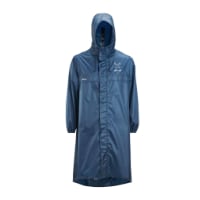First I apologize if I offended you, Vagabondette. It certainly was not my intention.
Political correctness is something that seems to change day to day, and I guess I'm not up to date.

Even my 27 year old walking partner in 2009, who was born and still lives in Mexico, referred to it as a "3d World Country," so I guess she also was not up to date. We will try to do better.
Second, I know personally many, many people
personally who have gotten sick from drinking water or eating fresh produce in Mexico (I currently live in Palm Desert but worked at Sasabe National Wildlife Refuge on the border of Mexico for quite some time). Whether this illness was from poor sanitation or old pipes, I know not.
On the other hand, I know of nobody personally who has gotten sick from drinking water in Spain. I've only been to a few Mexican border towns and have been pretty much all over Spain. And so, I'm just speaking from my own experience, which I'm sure is limited.
Third, I realize some people tend to get sick drinking water from anyplace different, and some do not. I have a cousin who gets sick from drinking the water in Hanford, California where we were born. And so, if you are one of those people, especially one who has had giardia, which must have been a stressful experience, then bottled water makes sense.
In the end, my only concern really is not what kind of water you drink but that people who purchase the plastic dispose of it properly.



















